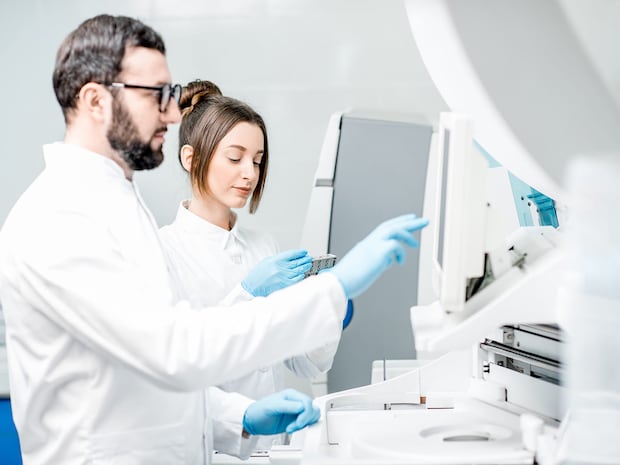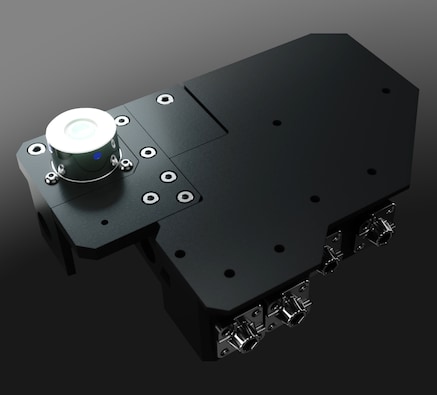RecommendMail Facebook LinkedIn
- Digitization
- Health & Science
- Tech Talk
Driving faster to market for your life science imaging instrument or live cell imaging system
There are three main considerations that dictate your imaging product design: performance, versatility, and time-to-market. There are fundamental trade-offs among them and clear market trends in instrument design over recent years. Focus on the application, operator independence, a short learning curve, speed from sample to data and consistent results are high on the list of preferences with life science and clinical users.
, Ute HofmannFinding optimum balance for your life science analytics applications

In every measurement system, there is an inherent trade-off among performance factors. In photonics, it all has to do with the light budget. Take for example the confocal microscope: it is capable of achieving very high optical resolution, and that entails closing the confocal pinhole. Thus, the available light from the sample becomes restricted; this increases the necessary dwell-time on the sample, resulting in slower frame rates and potential photo-damage of the sample.
No matter how advanced the imaging system, it still has to deal with these fundamental limitations, and the trade off, in this example, is between resolution and speed. When you introduce spectral resolution into the equation to multiplex your detection, yet another limitation is introduced, and the application must consider the priorities in the trade-off. If the sample produced an unlimited amount of light, of course, there would be no trade-off. But that is never the case in the natural world.
Just as there are physical laws that determine the trade-offs in photonics, there are similar trade-offs when you design a life science imaging system. These can be summarized as performance, versatility and time-to-market. And similarly, just as an unlimited amount light from the sample would eliminate the trade-off, if your customer had an unlimited amount of money the trade-off would disappear. But that is, once again, never the case in reality.
Live cell imaging: the triangle of trade-offs

A trend in life science instrument design has become apparent over recent years: simplifying instruments to a limited set of applications – maybe even just one application. That’s because instrument versatility means complexity. More modalities mean more settings, more light-consuming optics and more complex navigation around the instrument, which demands operator expertise – perhaps even a dedicated operator.
As the number of available technologies in the life science lab grows, the more likely it is that customers prefer that instruments are as simple and intuitive as possible and can be used by anyone in the lab with minimal training. Simplicity of operation and a singular focus to the application are increasingly the important drivers for instrumentation design to meet prevailing market needs.
The beauty of simplicity becomes particularly apparent when the path from sample to data is considered. Life science research facilities and diagnostic labs must manage resources carefully, be it time, money, or expertise. The more complex and time-consuming that the path from sample to data becomes, in order to accommodate versatility, the more resources are required in the lab. Shortening the sample to data path provides a significant operational advantage, decreases error and increases sample throughput. Most workflows try to minimize the number of manual operator steps to the bare minimum, in what has become known as ‘walkaway operation’ – the dream scenario is to just load the samples and reagents, and then collect the data.
Simplified sample handling and analysis also enable operators with less training and experience to run samples and obtain high quality data, shifting processing from senior to more junior users and subsequently saving cost and freeing up time of highly skilled professionals to concentrate on experimental design and processing the results.
The positive news is that, with a clear definition of the application and focus on sample-to-data, it is fully feasible to efficiently develop a system to launch on the market. Having good research with your end-users’ labs is a great place to start gathering the information to develop your product specification.
In the next article, we will discuss how the JENOPTIK SYIONS® platform was designed to negotiate the triangle of trade-offs flexibly. The JENOPTIK SYIONS® platform offers whole sub-system design via integrated optical design, mechanics, electronics, and software. Curious to find out more about JENOPTIK SYIONS®? Then read the next articles in our series or just contact us.
Product Recommendation
About Ute Hofmann
New enabling technologies and methods constantly being researched and developed to ensure better prevention, diagnosis and treatment of diseases are her daily motivation. Dr. Ute Hofmann joined Jenoptik in 2019 as an experienced product manager for life science and diagnostics with a focus on cellular and molecular applications. She is responsible for Jenoptik’s bioimaging solutions and supports the success of OEM customers at the interfaces of R&D and sales.







